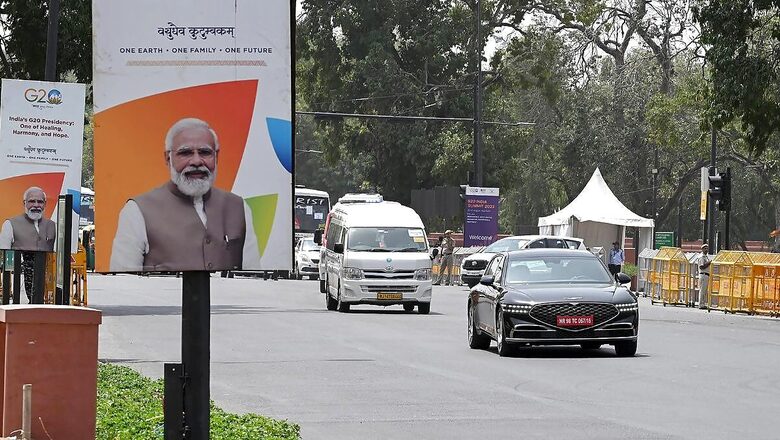
views
From Kashmir to Arunachal Pradesh, Gujarat and Tamil Nadu, India has democratised its G20 Presidency by detaching the “Delhi-centric” approach, and involved other states, showcasing its vibrant cultural diversity and putting other Indian cities on the world map of diplomacy.
With several meetings being held in Arunachal Pradesh’s Itanagar, Kashmir, Gandhinagar in Gujarat and Jaipur in Rajasthan among other cities, Prime Minister Narendra Modi has turned the G20 Presidency into “people’s presidency”.
These meetings have shown India’s vast tourism potential to the foreign delegates, and have also captured its IT and industrial hubs live in action.
G20 in Kashmir
The Third Tourism Working Group (TWG) meeting in Srinagar hosted 60 foreign delegates and unleashed its tourism potential on the global stage.
The G20 meeting was one of the biggest international events held in Jammu and Kashmir (J&K) since the abrogation of Article 370 in August 2019.
While China skipped the meeting, delegates and officials from G20 members, including Argentina, Australia, Brazil, Canada, France, Germany, Indonesia, Italy, Japan, South Korea, Mexico, Russia, South Africa, the UK, the US, and the European Union, attended the inaugural events on the banks of Dal Lake.
This showed while China was deeply opposed to India’s plan, all other nations could not resist participating in the Kashmir meeting, reinforcing India’s territorial integrity and sovereignty.
G20 in Arunachal Pradesh
A G20 meeting was held in March in Itanagar, Arunachal Pradesh, quite to the chagrin of China, in which more than 100 delegates participated. While China gave the two-day programme a miss, all other nations sent their delegates to the event.
The northeastern state showcased its Himalayan beauty and cultural richness allowing the people of Arunachal Pradesh to participate in high-stakes diplomatic affairs and voice their patriotism.
Other States
The G20 meetings have presented as a multifaceted nation on the global stage. Amritsar and Chandigarh showcased Punjab’s Sikh heritage while Rishikesh in Uttarakhand highlighted its religious significance for Hindu pilgrims to the world.
Rich Rajasthani culture and historical forts were on deploy in Pink City, Jaipur, and Blue City, Jodhpur. Khajuraho highlighted ancient India’s architectural grandeur. In Varanasi, which hosted the culture ministers’ meeting, delegates saw India’s oldest city thriving in all the colours of its heritage and took a walk in time through India’s brightest and darkest moments in history. In Hampi, delegates were acquainted with the grand 14th century Vijayanagar empire. In the Eastern Ghats, Bhubaneswar’s temple architecture was on display. The beautiful sandy beaches of industrial town Vizag and party-hub Goa also made it to the G20 map.
In India’s Silicon Valley, Bengaluru and in Hyderabad, delegates saw India’s renown IT prowess live in action. In Thiruvananthapuram, the world saw India’s grand ancient temples and modern space power residing side by side.
Turning Over a New Leaf in Diplomacy
By not making Delhi the only centre of attraction at the G20 Summit, the Modi government has sent a message to the world on democratising democracy.
This is not the first time such an approach was taken to plan diplomatic meetings. PM Modi hosted Chinese President Xi Jinping in Gujarat in 2014 and in Mahabalipuram in Tamil Nadu in 2018. He hosted then US President Donald Trump and Australian Prime Minister Anthony Albanese in Gujarat too.
Public Participation
In his monthly ‘Mann Ki Baat’ address, Modi had said India’s G20 Presidency is a “people’s presidency” in which “the spirit of public participation is at the forefront”.
The G20 events have given a facelift to India’s major cities, and has also helped driven tourism. Exhibitions are being held in cities to attract visitors.


















Comments
0 comment